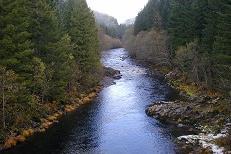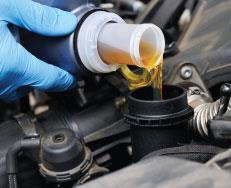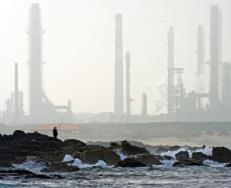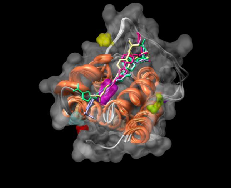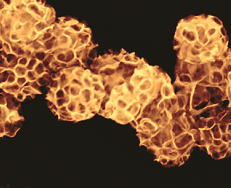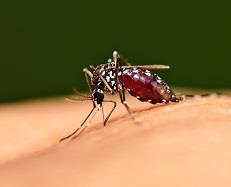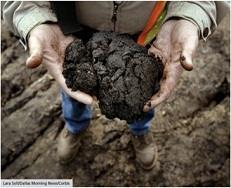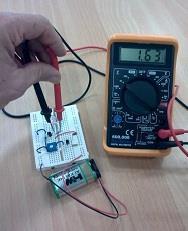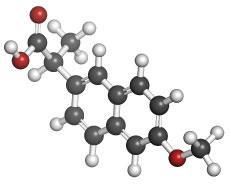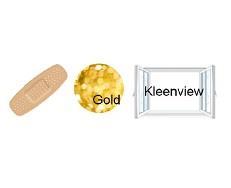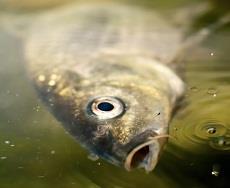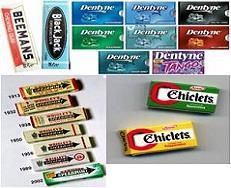- Home
- I am a …
- Resources
- Collections
- Remote teaching support
- Starters for ten
- Screen experiments
- Assessment for learning
- Microscale chemistry
- Faces of chemistry
- Classic chemistry experiments
- Nuffield practical collection
- Anecdotes for chemistry teachers
- Literacy in science teaching
- More …
- Climate change and sustainability
- Alchemy
- On this day in chemistry
- Global experiments
- PhET interactive simulations
- Chemistry vignettes
- Context and problem based learning
- Journal of the month
- Chemistry and art
- Classic chemistry demonstrations
- In search of solutions
- In search of more solutions
- Creative problem-solving in chemistry
- Solar spark
- Chemistry for non-specialists
- Health and safety in higher education
- Analytical chemistry introductions
- Exhibition chemistry
- Introductory maths for higher education
- Commercial skills for chemists
- Kitchen chemistry
- Journals how to guides
- Chemistry in health
- Chemistry in sport
- Chemistry in your cupboard
- Chocolate chemistry
- Adnoddau addysgu cemeg Cymraeg
- The chemistry of fireworks
- Festive chemistry
- Collections
- Education in Chemistry
- Teach Chemistry
- Events
- Teacher PD
- Enrichment
- Our work
- More navigation items
Context and problem-based learning
Inspire and engage your students with examples of how valuable chemistry can be in the real world.
Applied chemistry
A dip in the dribble: river pollution | context and problem-based learning
A problem solving case study in analytical, environmental and industrial chemistry
A sticky situation
Use this context-based learning module, based around the chemistry of lubricants, with undergraduate students
Chemistry and food security
This context/problem-based learning (C/PBL) resource is part of a collection we have commissioned for you to use with your undergraduate students. This 5 credit module is based on the following scenario:This resource will give your students an introduction to food safety and DNA analysis. It is based on DNA and ...
Chemistry's interfaces: geochemical
This C/PBL resource is an introduction to geochemistry in the context of the geological and archaeological record. It is based on the following question: What would the geochemical record of human activities and civilisation be in the geochemical record of the future?
Chemistry's interfaces: nutrition
This C/PBL resource is an introduction to some of the most important aspects of chemical biology. Its introduces students to a number of important chemical structures which play major biological roles within human metabolism.
Chemistry's interfaces: the nano frontier
This resource is designed as an introduction to the science of metal and semiconductor nanoparticles. It’s focused on level 1 and 2 students so it places a particular emphasis on the difference between the physical and chemical properties of the bulk form of materials, individual molecules and nanoparticles in the ...
Design your own fireworks show
This C/PBL resource asks undergraduate students to design, organise and run a simluated fireworks display. It is intended to support the development of key transferable skills in a discipline-specific context and requires some basic undergraduate chemistry knowledge. This resource includes an activity pack containing worksheets, briefing papers and presentations, allowing ...
Faster greener chemistry?
This context-based case study is laboratory-based and focuses on the synthesis, characterisation and evaluation of up to nine manganese(III) salen complexes that are employed as catalysts in the oxidation of alkenes. The approach used in this case study ensures learners work collaboratively and allows for the development of transferrable employability ...
Future Cities project
Set your learners a problem-based case study with a sustainable development project
Hwuche-Hwuche bark
Communication skills are an essential part of all university degree courses. In general, communication skills are developed throughout undergraduate courses via a range of activities and many departments already have substantial parts of their course aimed at transferable skills.
Launch-a-Lab: analyse organic pollutants
This problem-based case study involves tendering for a large contract to analyse the organic pollutants in ground water from Midshire River Authority. Students act as part of STS Contract Analysis Ltd., the company applying for the contract.
Molecules against malaria
This medicinal chemistry case study is designed to introduce students to the development of antimalarial 4-aminoquinolines and the early stages of drug discovery and development. It focuses on antimalarial 4-aminoquinolines (4-AQs) and involves an introduction to malaria, its causes, societal impact and the need for new drugs. It then presents ...
New drugs for old: pharmaceuticals
This is a problem-based case study looks at the isolation, identification and synthesis of a pharmaceutical drug. Students are involved in screening natural herbal remedies for their active ingredients.
Nuclear decommissioning: turning waste into wealth
This context/problem-based learning (C/PBL) resource is part of a collection we have commissioned for you to use with your undergraduate students. This 5 credit module is based on the following scenario:Your students will consider the management of a nuclear decommissioning project with a focus on adding value by re-purposing the ...
Oil sands process water: diamonds not so forever
This C/PBL resource is designed to help students discover what organic chemicals are present in the waste water which is produced during the processing of oil sands, and analytically assess these potentially toxic organic chemicals.
Pale horse: analytical chemistry & forensics
This problem-based case study sets analytical chemistry within the context of a forensic investigation of a suspicious death.
Pollutant detection and remediation
Case-study involving the development of adsorption and photocatalysis experiments to study the removal of a pollutant from waste-water. This resource and its components are licensed under a Creative Commons Attribution-NonCommercial-ShareAlike 3.0 Unported License.
QuantiCorp R&D: new products
This C/PBL resource involves an investigation into catalysis and conducting polymers for the production of biosensors. Students are challenged to develop a biosensor based on a conducting polymer in the context of an R&D department in a high-tech company.
Recycling the undesired enantiomer of Naproxen
This context/problem-based learning (C/PBL) resource is part of a collection we have commissioned for you to use with your undergraduate students. This 5 credit module is based on the following scenario:Your students work for a company that produces (S)-naproxen, a non-steroidal anti-inflammatory drug (NSAID), via a racemic method. Whilst (S)-naproxen ...
Small materials to solve big problems: nanochemistry
This context based case study investigates the use of nanomaterials for the development of commercial applications in the areas of medicine, materials and environment. It covers the synthesis, characterisation and application of nanomaterials in a variety of contexts. As part of the resource students are asked to investigate the use ...
Tales of the riverbank: environmental
This problem-based case study looks at the environmental problems found within the fictitious Coley River system in the county of Midshire. The environmental problems found in the river are organic, inorganic and physical in nature.
The chemistry of energy: case study
This resource is a group case study which guides students through some of the key chemical aspects of power generation, the distribution of energy and the relationship between science and policy. It’s a contextualised introduction to the application of several key chemical concepts such as thermodynamics to real world situations.
The Titan project
This problem-based case study concerns the location of a titanium dioxide plant and evaluation of analytical methods. Students are asked to act as the management team at the plant and produce a five-year plan for the site.
When chewing gum loses its flavour
This probelm-based learning resource is designed to help students to develop approaches which might lead to the discovery of what some of the unwanted tastes and smells in a specific foodstuff and how the causes of these could be tested for using analytical chemistry techniques.
You are what you ate
This C/PBL resource looks at the metabolic causes and incidence of obesity in the cultural and social environment within which students, tutors, and institutions operate. Students are presented with a problem, the growing incidence of obesity, in a real life context in which the core subject, metabolic chemistry, plays a ...
Career interviews
Chemistry careers in SMEs
This context/problem-based learning (C/PBL) resource is part of a collection we have commissioned for you to use with your undergraduate students. This 5 credit module is based on the following scenario:Your students will explore working for a small to medium sized enterprise (SME) in the Chemical and Allied Industries. This ...
Naproxen videos: Dr. Matthew Tozer
This resource forms part of a collection of videos that aims to provide undergraduate students with insights into what it is like to work for a small or medium-sized enterprise (SME).In these videos Matthew Tozer explains what it is like to work for Peakdale Molecular. He gives us an indication ...
SME videos: David Williamson
This resource forms part of a collection of videos that aims to provide undergraduate students with insights into what it is like to work for a small or medium-sized enterprise (SME).In these videos David Williamson explains what it is like to work for both an SME and a multinational company. ...
SME videos: Dr. Catherine O'Leary-Steele
This resource forms part of a collection of videos that aims to provide undergraduate students with insights into what it is like to work for a small or medium-sized enterprise (SME).In these videos Catherine O’Leary-Steele explains what it is like to work for LHASA. She gives us an indication of ...
SME videos: Dr. Matthew Tozer
This resource forms part of a collection of videos that aims to provide undergraduate students with insights into what it is like to work for a small or medium-sized enterprise (SME).In these videos Matthew Tozer explains what it is like to work for Peakdale Molecular. He gives us an indication ...
SME videos: Kristina Paraschiv
This resource forms part of a collection of videos that aims to provide undergraduate students with insights into what it is like to work for a small or medium-sized enterprise (SME).In these videos Kristina Paraschiv explains what it is like to work for an SME. She explains some of the ...
Waste to wealth videos: Brian Handy
This resource forms part of a collection of videos that aims to provide undergraduate students with insights into what it is like to work in the nuclear industry.In these videos Brian Handy explains what it is like to work in the nuclear industry. He describes some of the challenges, including ...
Waste to wealth videos: Martin Freer
This resource forms part of a collection of videos that aims to provide undergraduate students with insights into what it is like to work in the nuclear industry.In these videos Martin Freer explains what it is like to work in the nuclear industry. He describes some of the issues in ...
Waste to wealth videos: Patrick Regan
This resource forms part of a collection of videos that aims to provide undergraduate students with insights into what it is like to work in the nuclear industry.In these videos Patrick Regan explains what it is like to work with the media. He explains why and how scientists should engage ...
Waste to wealth videos: Peter Ivanov
This resource forms part of a collection of videos that aims to provide undergraduate students with insights into what it is like to work in the nuclear industry.In these videos Peter Ivanov explains what it is like to work as a radiochemist. He describes the role of solvent extraction in ...












